A GILT COPPER ALLOY FIGURE OF HEVAJRA TIBET, 15TH/16TH CENTURY With replaced turquoise settings. Himalayan Art Resources item no.16707 20.5 cm (8 in.) high Fußnoten This superbly modeled bronze portrays Hevajra and his consort embraced in a perfectly unified cosmic dance. Hevajra is a principal meditational deity of the high Anuttarayoga Tantras. He holds sixteen skull cups in his radiating arms, with eight containing animals representing the Eight Diseases, and the other eight containing deities representing the accomplished relief of each disease. His consort, Nairatmya, is a tantric form of Prajnaparamita, the Mother of all Buddhas. Together they dance passionately, transcending disease, and bestowing health and good fortune on the devotee. The gilded sculpture's slender physiognomy and treatment of regalia are inspired by the work of Sonam Gyaltsen, and were likely produced by a follower working within his artistic tradition. Sonam Gyaltsen is a recently identified Tibetan master artist who was active around 1430 CE (cf. Watt in Bonhams, New York, 19 March 2018, lot 3033). Compare with another gilt bronze Hevajra in Sakya Monastery, Shigatse, Central Tibet, attributed by Watt to Sonam Gyaltsen or his atelier (HAR 31935). The two sculptures share many stylistic elements, including the female deity's looped girdle, and the male deity's double garland consisting a string of dried skulls and another of freshly severed heads. The tight formation of his neatly arranged arms is similar to that of a gilt bronze Hevajra in the Musée Guimet, Paris (HAR 85922). Provenance Galerie Al Farahnick, Brussels, 20 June 1984 Private Belgian collection Christie's, Paris, 20 June 2017, lot 144 銅鎏金喜金剛像 西藏,十五或十六世紀 嵌以後配綠松石。 喜馬拉雅藝術資源網16707號 20.5釐米(8英吋) 800,000-1,200,000港幣 此尊精美華麗的造像呈現喜金剛與明妃相擁起舞之狀。喜金剛為密宗無上瑜伽續之重要本尊,其十六只手臂順勢展開,各持嘎巴拉碗,其中八隻盛裝八種動物,象徵八疾,另八隻碗中則有八位天神,每位象徵脫離所對應疾病之苦。其明妃為無我佛母,為眾佛之母般若波羅蜜多菩薩之密宗形象。此處主尊與明妃熱情起舞,為觀者消除病痛,並賜以安康與財富。 本造像中兩尊神袛纖瘦頎長的身形與珠寶裝飾皆由索南堅贊之風格而來,可能為其傳人依大師手法而製作。索南堅贊為近期學術界發現的西藏藝術大師,活躍於1430年前後(可參考傑夫·瓦特為邦瀚斯紐約2018年3月19日拍賣之3033號拍品所撰文)。藏中日喀則薩迦寺所藏一尊銅鎏金喜金剛像(喜馬拉雅藝術資源網31935號)亦被傑夫·瓦特認定為索南堅贊或其學徒所作。此尊薩迦寺銅像與本拍品的諸多細節皆十分相似,包括明妃所著層層垂下的珠裙,以及喜金剛所掛之由乾枯骷髏與新鮮頭顱構成的雙層長鍊。此處喜金剛緊密排列的手臂亦與巴黎吉美博物館所藏一尊銅鎏金喜金剛像(喜馬拉雅藝術資源網85922號)十分相似。 來源 Galerie Al Farahnick,布魯塞爾,1984年6月20日 比利時私人珍藏 佳士得,巴黎,2017年6月20日,拍品144
A GILT COPPER ALLOY FIGURE OF HEVAJRA TIBET, 15TH/16TH CENTURY With replaced turquoise settings. Himalayan Art Resources item no.16707 20.5 cm (8 in.) high Fußnoten This superbly modeled bronze portrays Hevajra and his consort embraced in a perfectly unified cosmic dance. Hevajra is a principal meditational deity of the high Anuttarayoga Tantras. He holds sixteen skull cups in his radiating arms, with eight containing animals representing the Eight Diseases, and the other eight containing deities representing the accomplished relief of each disease. His consort, Nairatmya, is a tantric form of Prajnaparamita, the Mother of all Buddhas. Together they dance passionately, transcending disease, and bestowing health and good fortune on the devotee. The gilded sculpture's slender physiognomy and treatment of regalia are inspired by the work of Sonam Gyaltsen, and were likely produced by a follower working within his artistic tradition. Sonam Gyaltsen is a recently identified Tibetan master artist who was active around 1430 CE (cf. Watt in Bonhams, New York, 19 March 2018, lot 3033). Compare with another gilt bronze Hevajra in Sakya Monastery, Shigatse, Central Tibet, attributed by Watt to Sonam Gyaltsen or his atelier (HAR 31935). The two sculptures share many stylistic elements, including the female deity's looped girdle, and the male deity's double garland consisting a string of dried skulls and another of freshly severed heads. The tight formation of his neatly arranged arms is similar to that of a gilt bronze Hevajra in the Musée Guimet, Paris (HAR 85922). Provenance Galerie Al Farahnick, Brussels, 20 June 1984 Private Belgian collection Christie's, Paris, 20 June 2017, lot 144 銅鎏金喜金剛像 西藏,十五或十六世紀 嵌以後配綠松石。 喜馬拉雅藝術資源網16707號 20.5釐米(8英吋) 800,000-1,200,000港幣 此尊精美華麗的造像呈現喜金剛與明妃相擁起舞之狀。喜金剛為密宗無上瑜伽續之重要本尊,其十六只手臂順勢展開,各持嘎巴拉碗,其中八隻盛裝八種動物,象徵八疾,另八隻碗中則有八位天神,每位象徵脫離所對應疾病之苦。其明妃為無我佛母,為眾佛之母般若波羅蜜多菩薩之密宗形象。此處主尊與明妃熱情起舞,為觀者消除病痛,並賜以安康與財富。 本造像中兩尊神袛纖瘦頎長的身形與珠寶裝飾皆由索南堅贊之風格而來,可能為其傳人依大師手法而製作。索南堅贊為近期學術界發現的西藏藝術大師,活躍於1430年前後(可參考傑夫·瓦特為邦瀚斯紐約2018年3月19日拍賣之3033號拍品所撰文)。藏中日喀則薩迦寺所藏一尊銅鎏金喜金剛像(喜馬拉雅藝術資源網31935號)亦被傑夫·瓦特認定為索南堅贊或其學徒所作。此尊薩迦寺銅像與本拍品的諸多細節皆十分相似,包括明妃所著層層垂下的珠裙,以及喜金剛所掛之由乾枯骷髏與新鮮頭顱構成的雙層長鍊。此處喜金剛緊密排列的手臂亦與巴黎吉美博物館所藏一尊銅鎏金喜金剛像(喜馬拉雅藝術資源網85922號)十分相似。 來源 Galerie Al Farahnick,布魯塞爾,1984年6月20日 比利時私人珍藏 佳士得,巴黎,2017年6月20日,拍品144

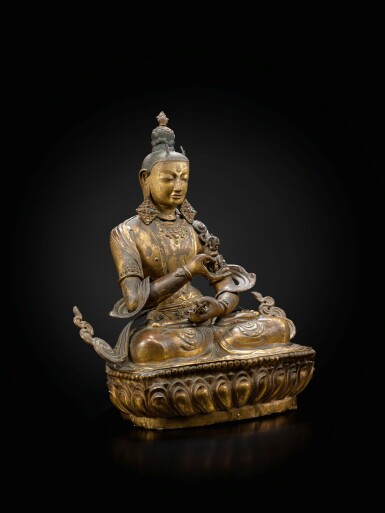
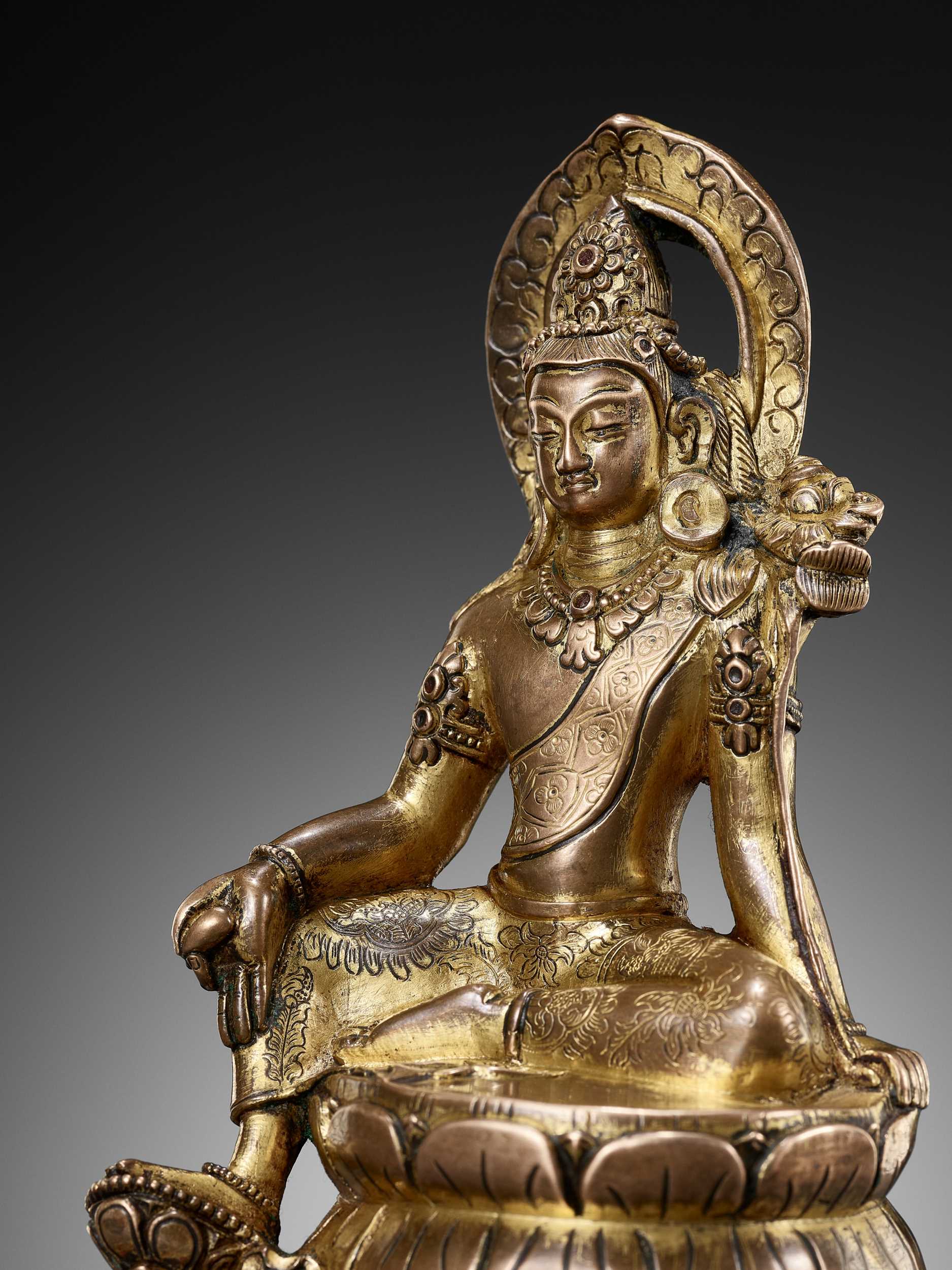
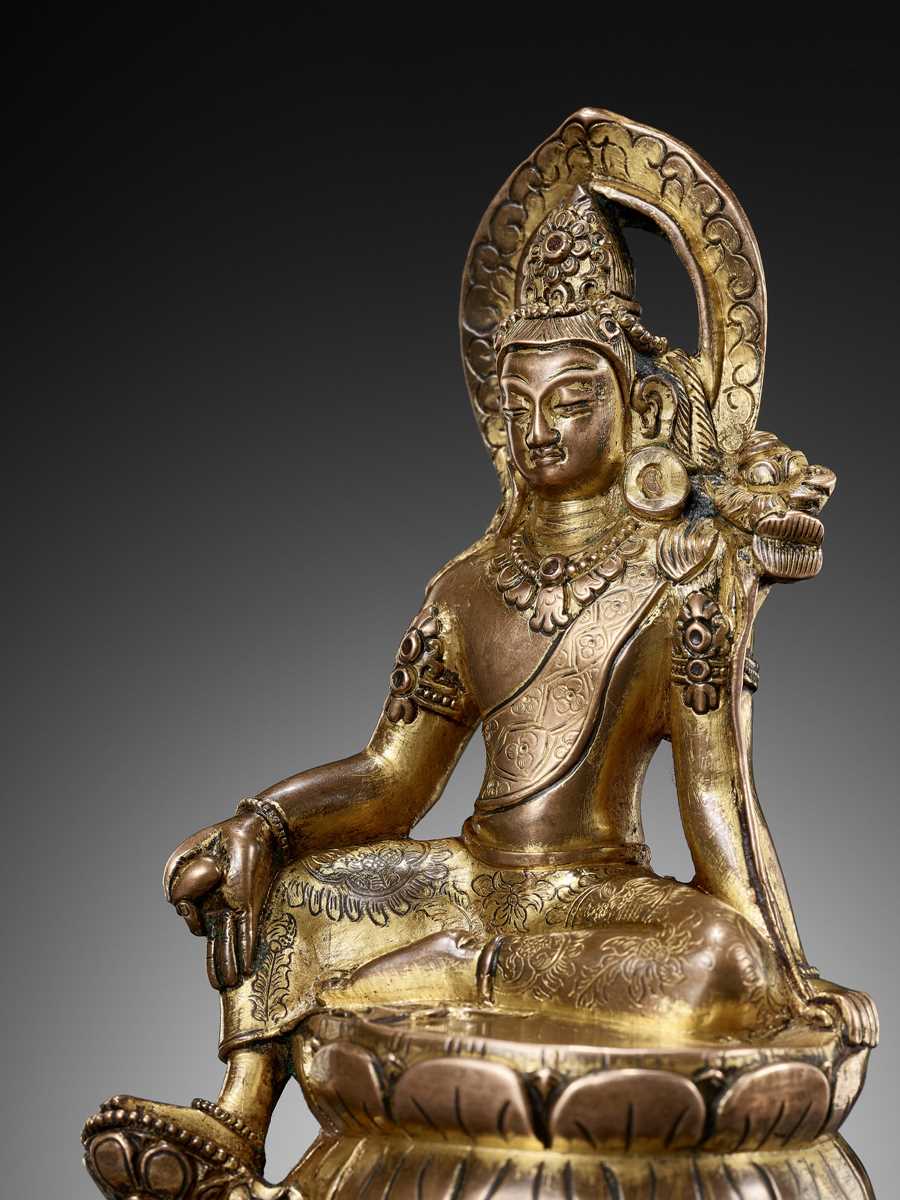


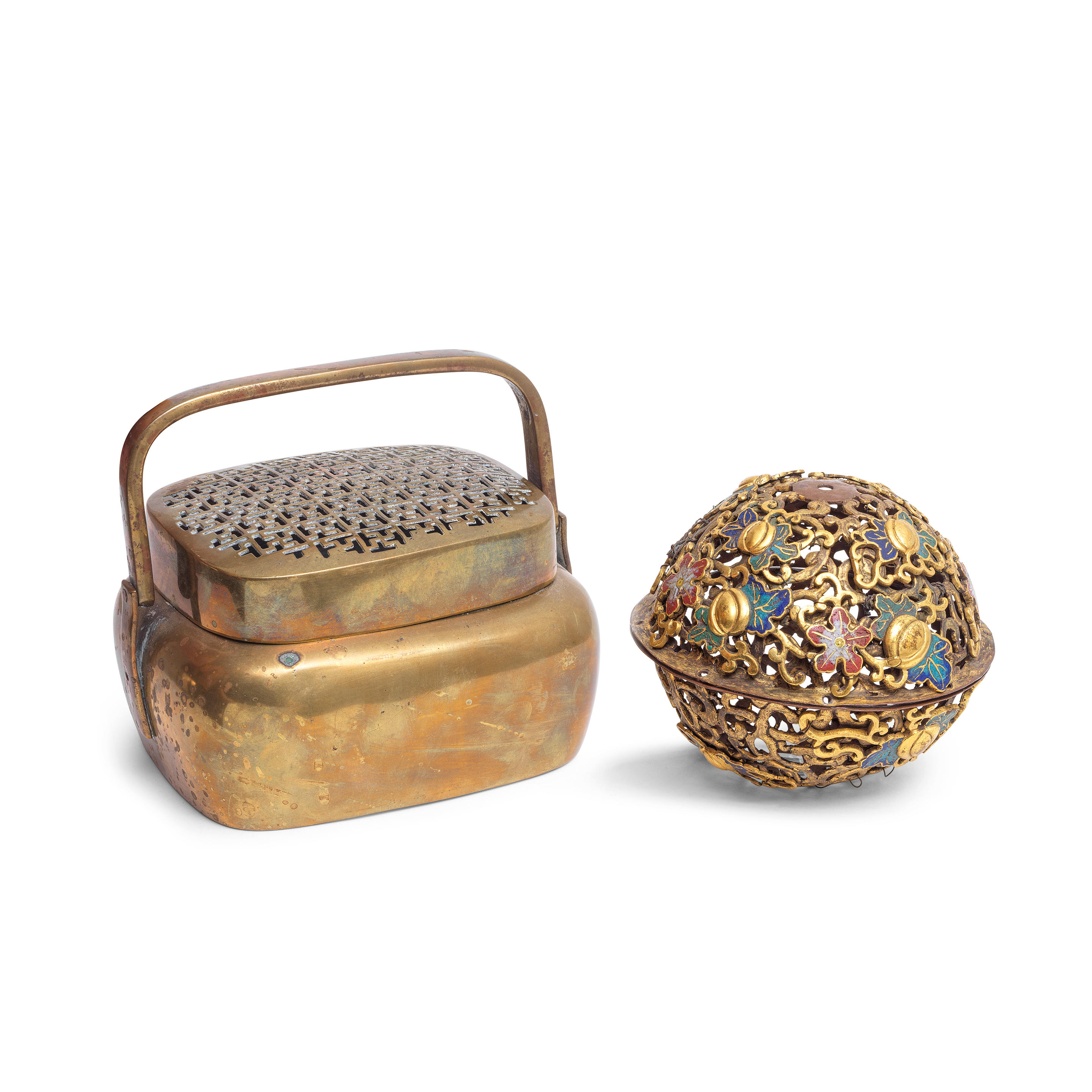




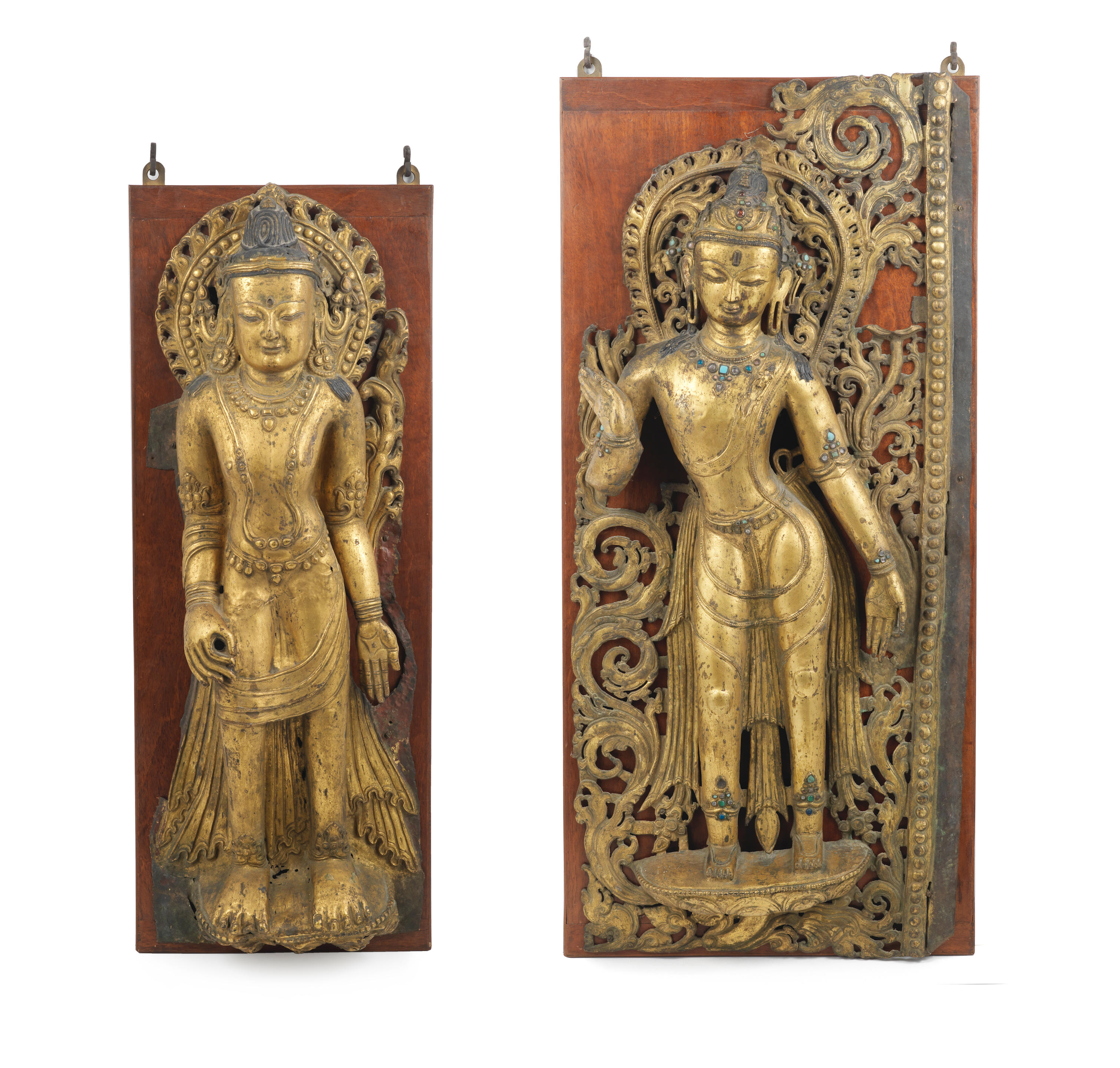
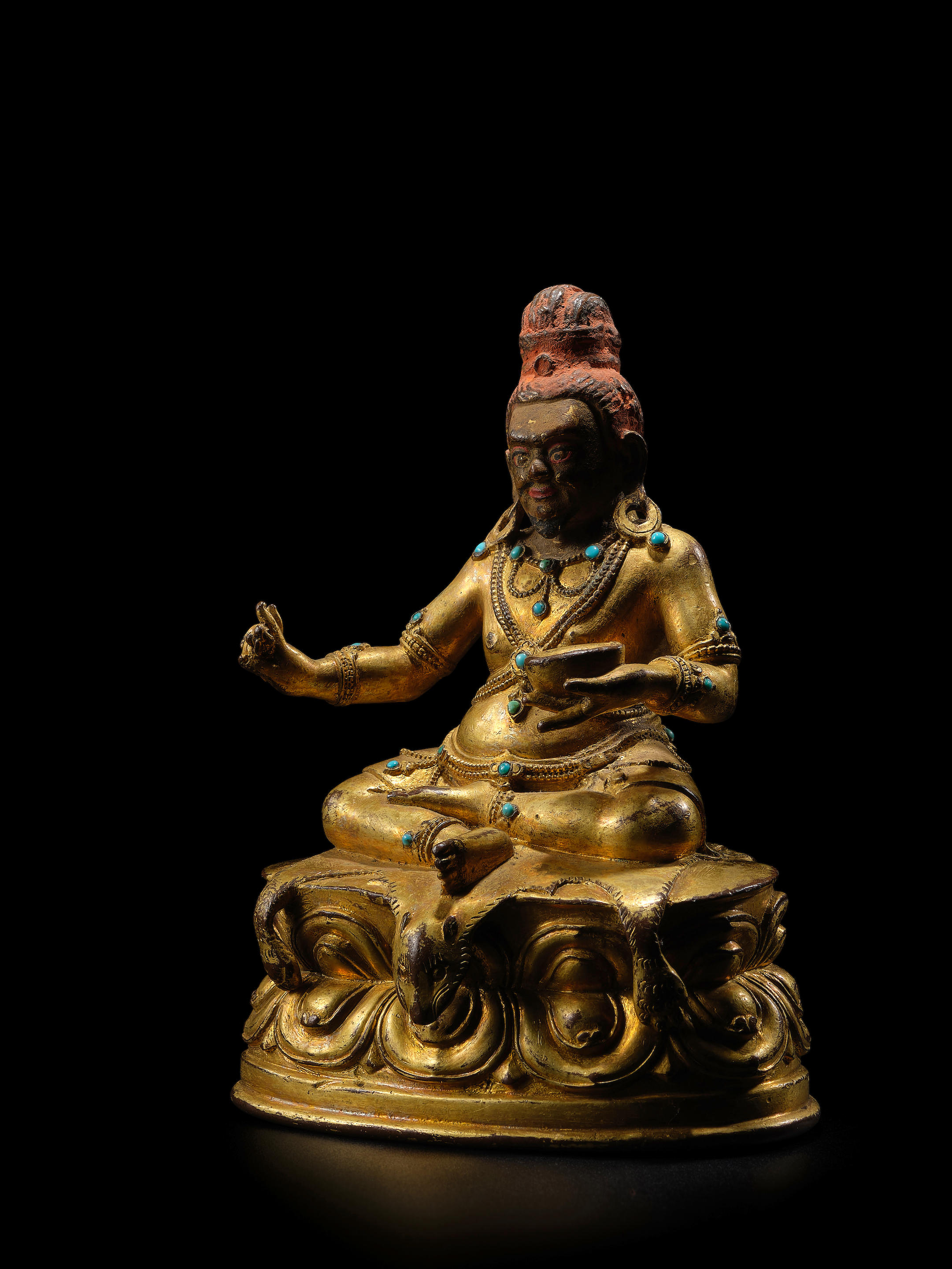

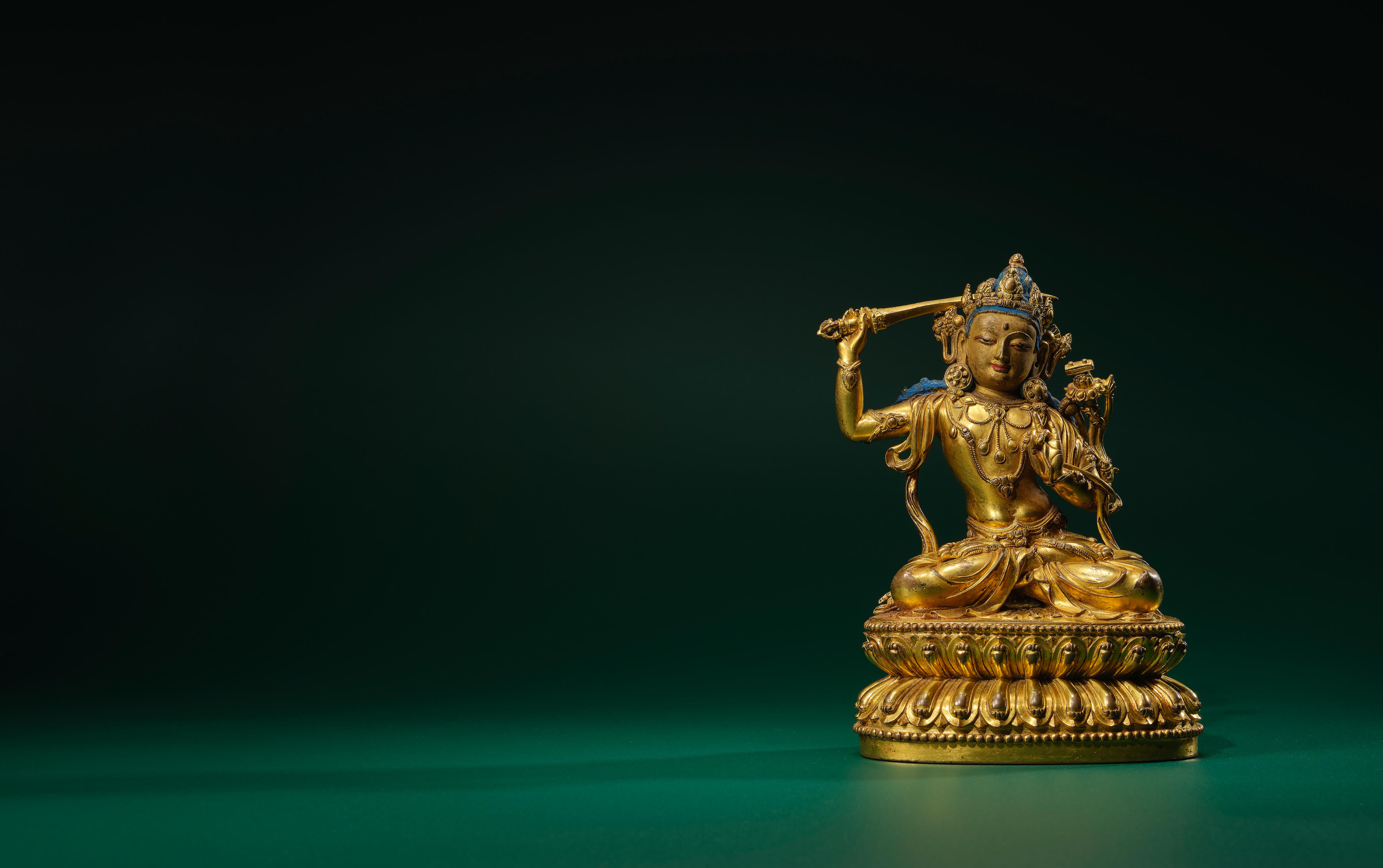
Testen Sie LotSearch und seine Premium-Features 7 Tage - ohne Kosten!
Lassen Sie sich automatisch über neue Objekte in kommenden Auktionen benachrichtigen.
Suchauftrag anlegen